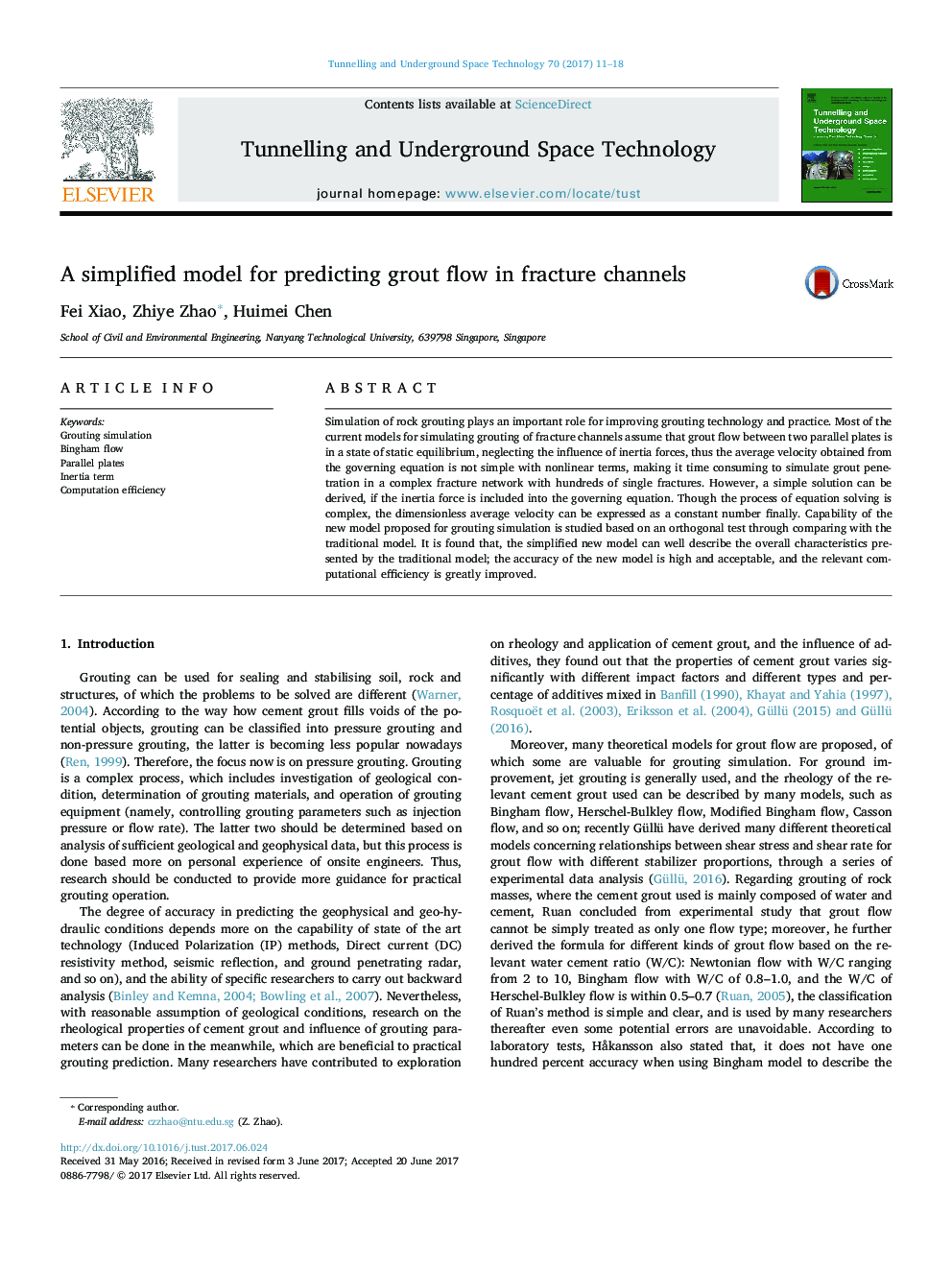| Article ID | Journal | Published Year | Pages | File Type |
|---|---|---|---|---|
| 4929216 | Tunnelling and Underground Space Technology | 2017 | 8 Pages |
Abstract
Simulation of rock grouting plays an important role for improving grouting technology and practice. Most of the current models for simulating grouting of fracture channels assume that grout flow between two parallel plates is in a state of static equilibrium, neglecting the influence of inertia forces, thus the average velocity obtained from the governing equation is not simple with nonlinear terms, making it time consuming to simulate grout penetration in a complex fracture network with hundreds of single fractures. However, a simple solution can be derived, if the inertia force is included into the governing equation. Though the process of equation solving is complex, the dimensionless average velocity can be expressed as a constant number finally. Capability of the new model proposed for grouting simulation is studied based on an orthogonal test through comparing with the traditional model. It is found that, the simplified new model can well describe the overall characteristics presented by the traditional model; the accuracy of the new model is high and acceptable, and the relevant computational efficiency is greatly improved.
Related Topics
Physical Sciences and Engineering
Earth and Planetary Sciences
Geotechnical Engineering and Engineering Geology
Authors
Fei Xiao, Zhiye Zhao, Huimei Chen,
